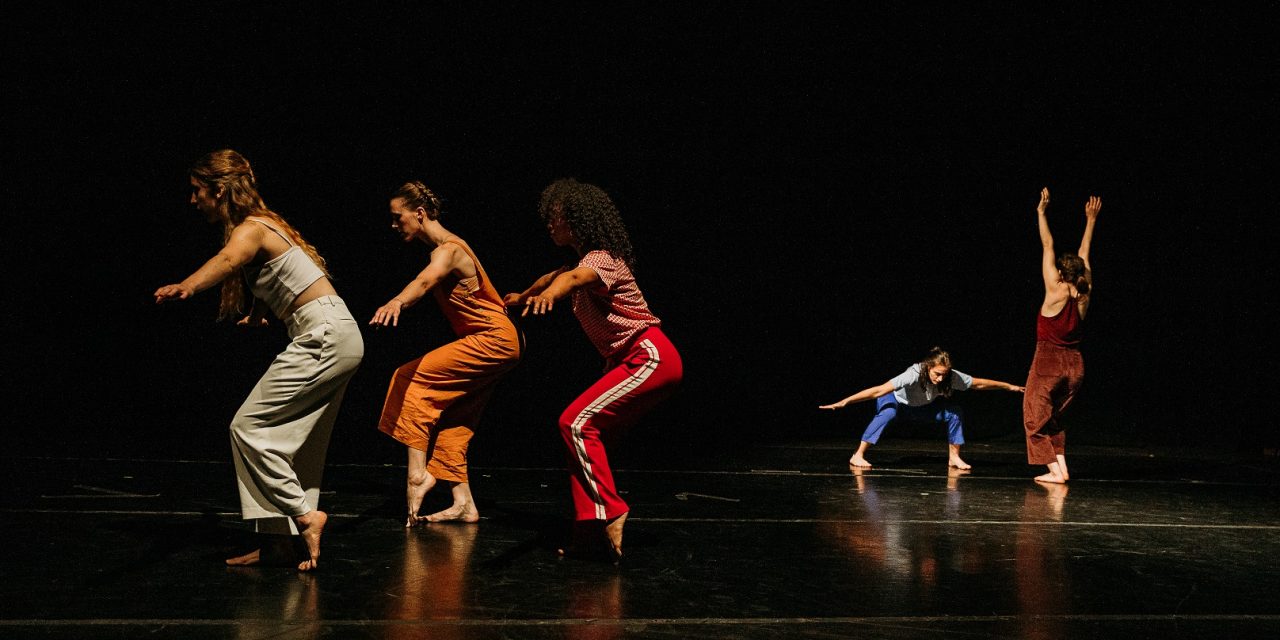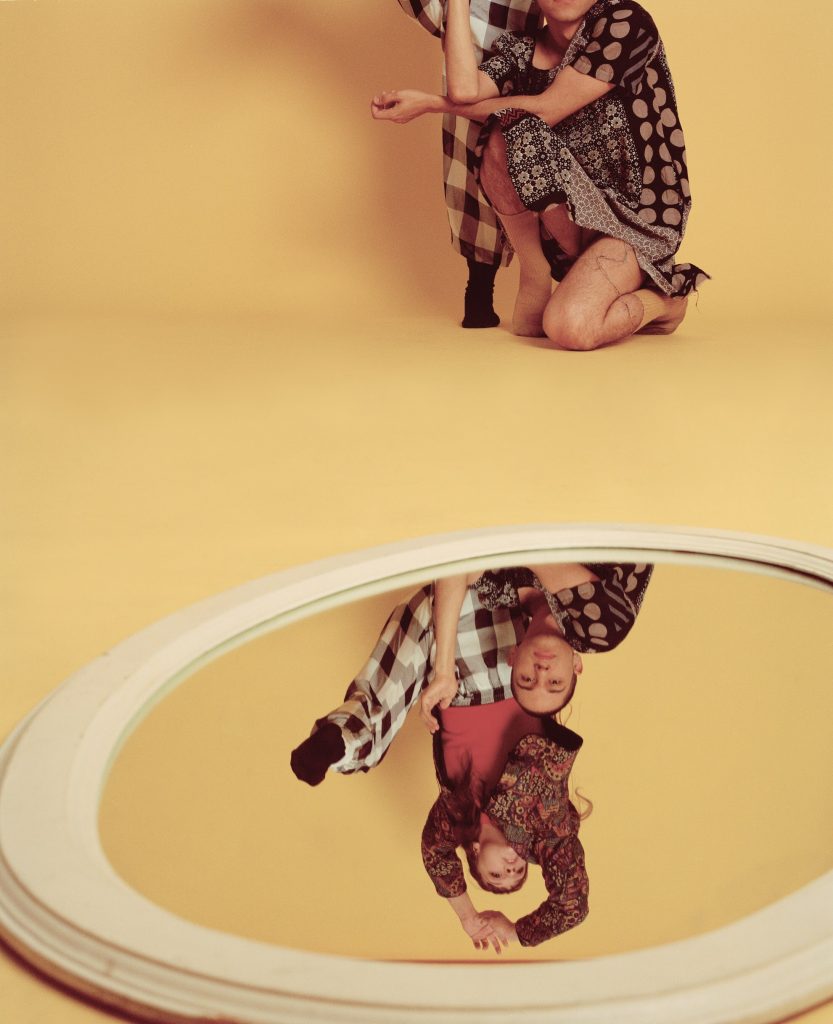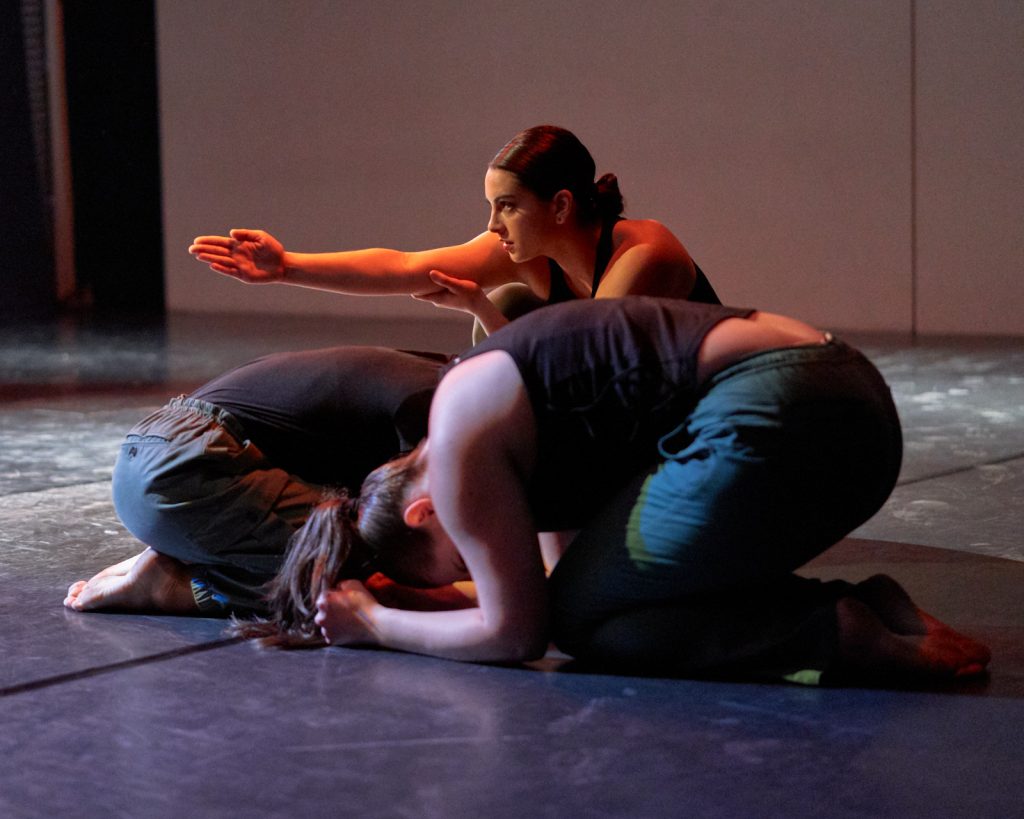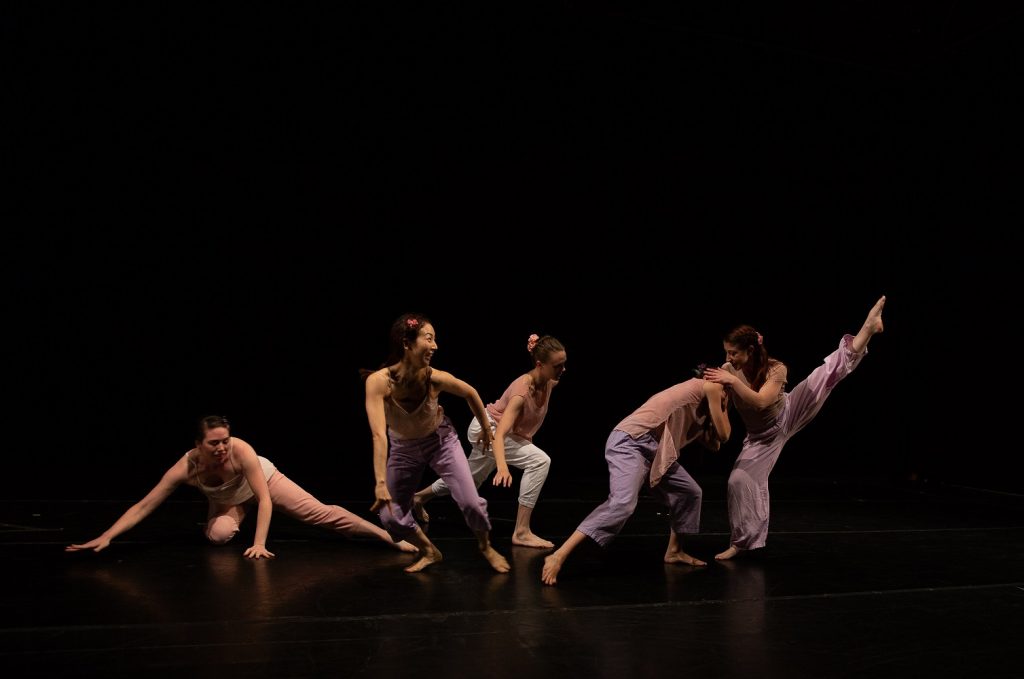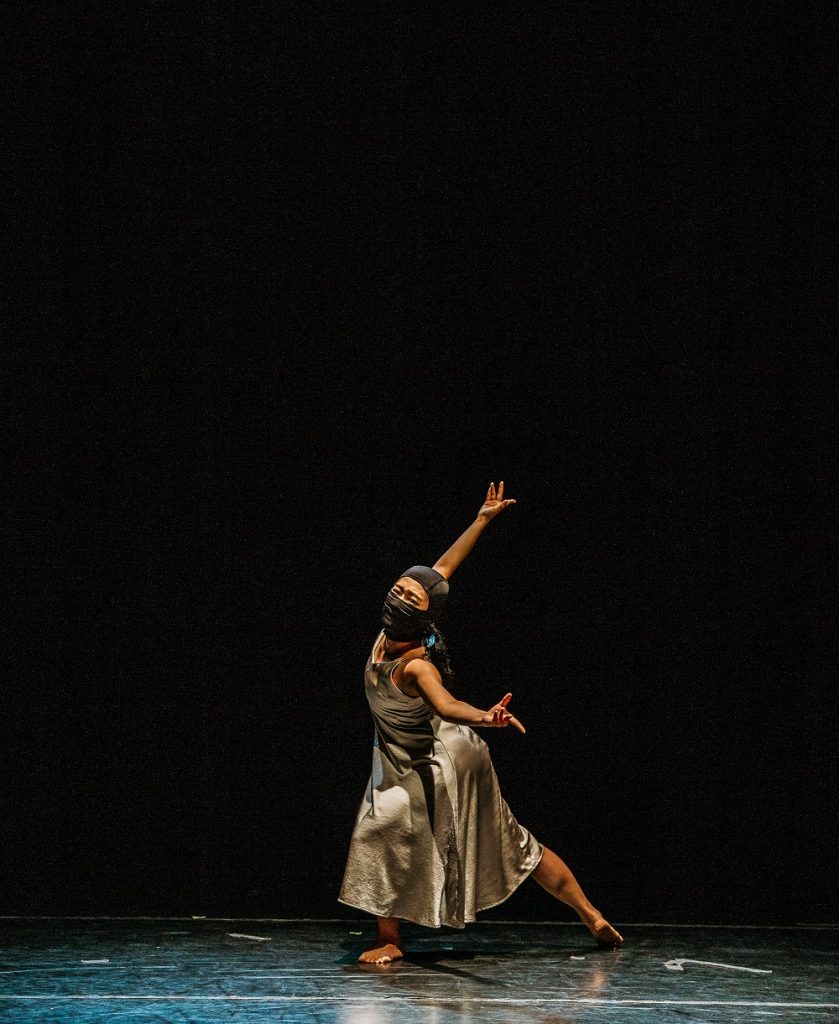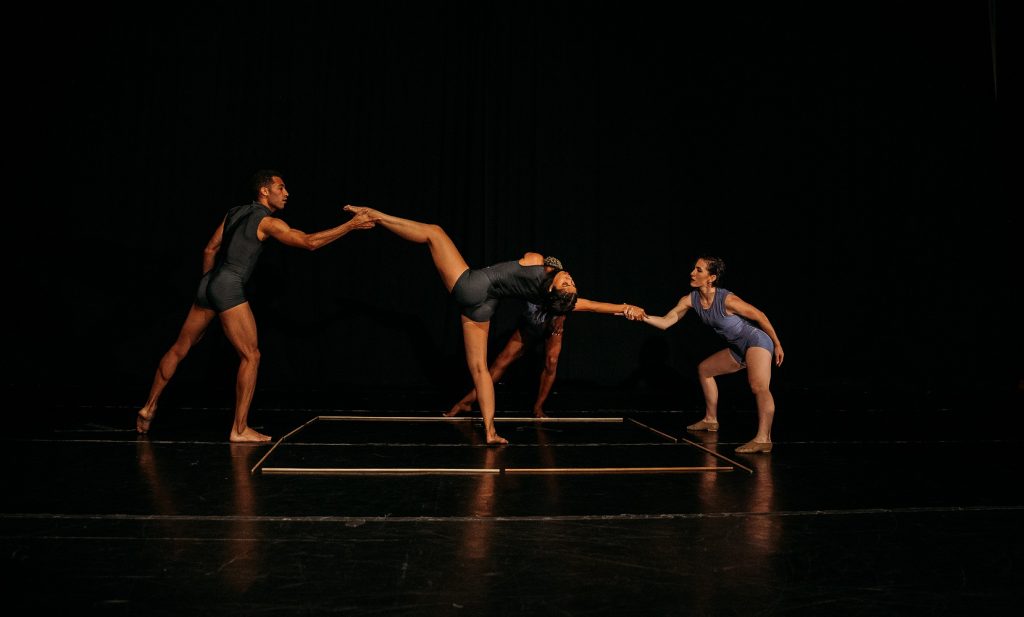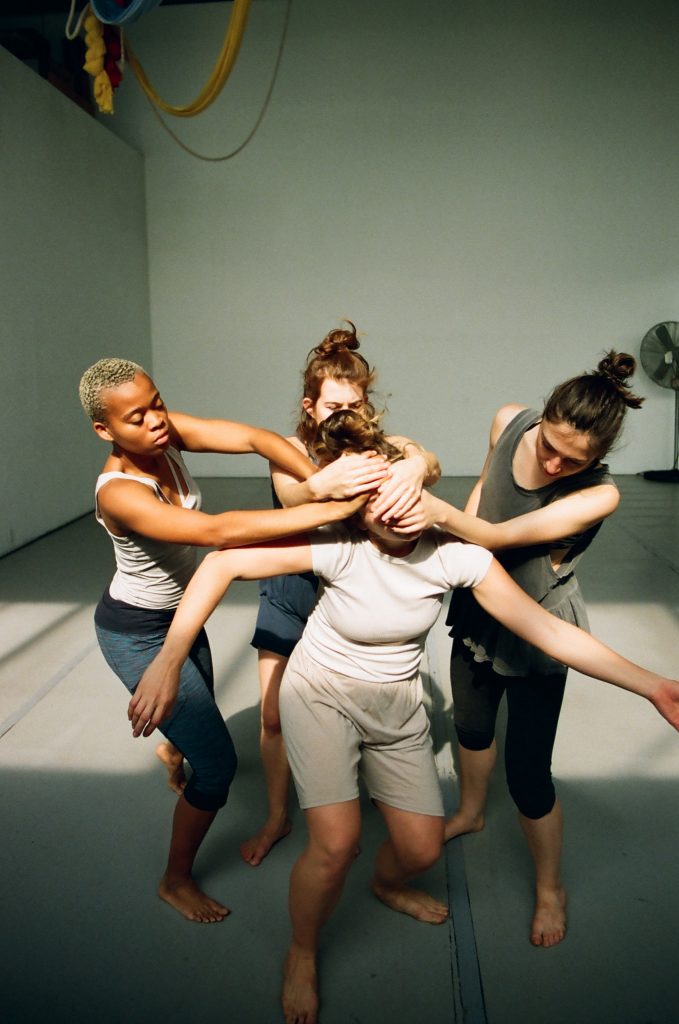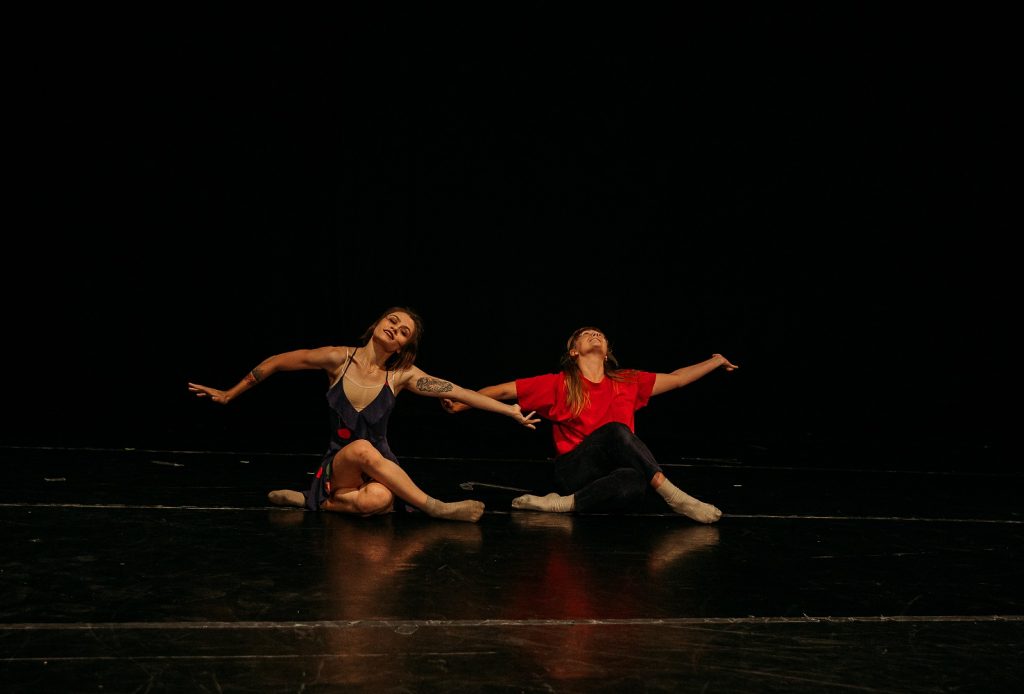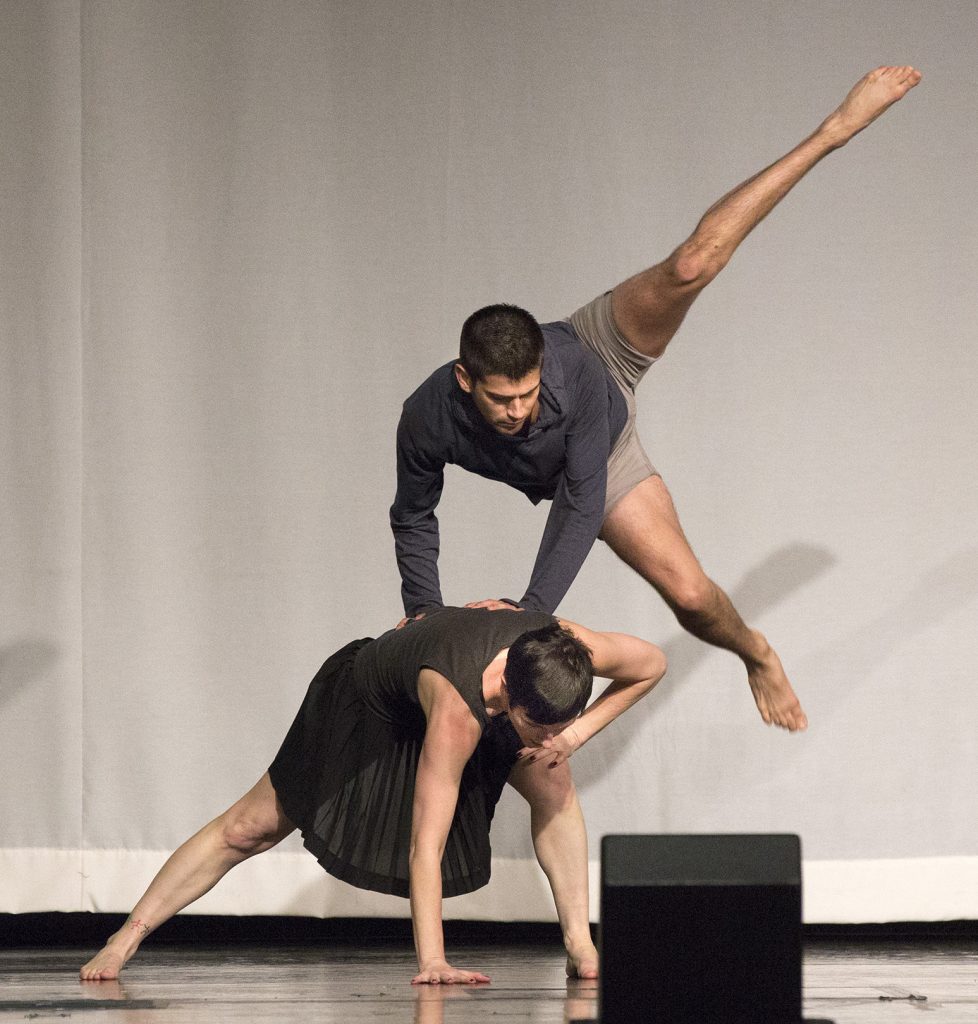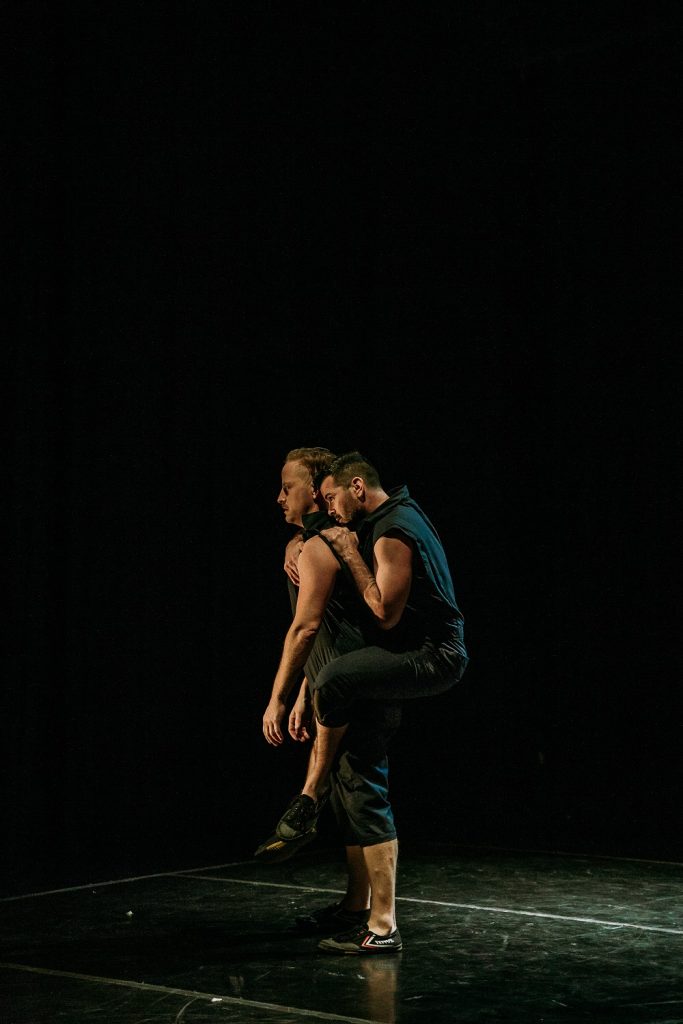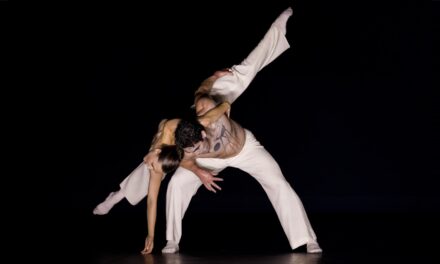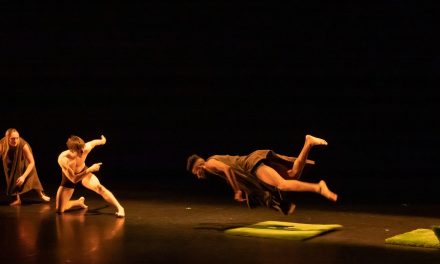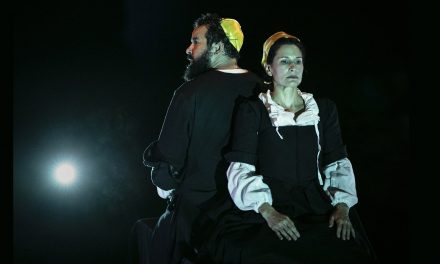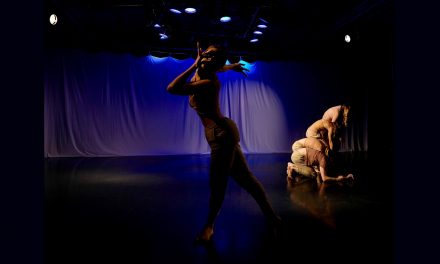Part II of Brockus Projects’ Los Angeles Dance Festival commenced on April 26 with a creative collection of performances showcasing a more eclectic side to the city’s dance culture. Many of the pieces were thematically darker, but each stood out on its own with both common and curious concepts that artistically and choreographically embodied the full gamut of contemporary dance.
The production was housed within DIAVOLO Dance Company’s intimate studio right next door to BrockusRED’s own atelier in East LA—an appropriately untidier setting for the three-day experimental FRINGE show than the more formal Luckman Fine Arts Complex, where Part I had taken place. Opening night was packed to capacity with viewers closely gathered around the intimate stage hidden away behind DIAVOLO’s giant props.
fabe Dance inaugurated the show with “Drugs Can’t Buy”, a solo excerpt by choreographer Mallory Fabian, performed exquisitely by Kevin Zambrano. Intense, but rewarding to watch, the work was alive with constant movement signaling desperation and anxiety. Darting around every angle of the stage, Zambrano’s muscular form was permanently in a state of flex as he swung his arms erratically and made his way throughout the space with lunging leaps and sprawling limbs to ominous and religious sounding chants by Æ. Often he pantomimed carrying a heavy weight in his hands and on his back—a possible representation of the psychological burden faced after coming off of a bender.
Lyndsi Zapata’s SiZa Dance Company was up next with Half and Half, featuring Eva Flores, MaijaLisa Miltz and Marie Elena Martinganoto Lotic’s song “Fragility”, an electric tone-based composition that dictated the routine’s cautious vibes. Contrary to “Drugs Can’t Buy” Contrary to “Drugs Can’t Buy”, this piece was performed more delicately, with the women synchronizing their walks, sanding closely in pairs and only briefly separating as though in a perpetual state of uncertainty. The focus was on lower body strength as the trio formed a gentler exposition with headstands and swimming movements. Throughout their journey they consistently checked in with each other through hand goggles, their altering perspectives captured wonderfully in the lighting schema’s varying angles of illumination.
Charlotte Katherine & Co.’s Les Petits Plaisirs De Vie seemed to take place inside a fairy dome wherein Charlotte Katherine Smith’s quintet of laughing and skipping dancers (Leslie Duner Alvarez, Hyosun Choi, Taylor Unwin, Katherine Grace Murphy, and Charlotte Smith) existed in an alternate world of pastels and whimsy, enjoying the titular “little pleasure of life”. Giggling with glee, the pixies’ movements were reminiscent of a woodland scene from a turn of the 20th century ballet, complete with string-heavy melodies by Benjamin Marx (mixed/edited by Zac Greenberg). Each châinés was followed by captivating looks upward, as the women leaned on one another, then extended their arms and cupped their hands as though attempting to grab the ethereal. Theirs was by far the most heartwarming of the evening.
Next was a solo by BrockusRED called Inside, choreographed and performed by Deborah Brockus’ right-hand lady, Julienne Mackey. A moody piece, this served the opposite effect of its predecessor in the lineup, with Mackey looking displeased and impatient as she thrashed within a large chair, swinging her legs around and over the arm rests as blues music played by Six Degrees. The piece was simple, yet accurately captured a deep degree of frustration. Some of the facial expressions seemed contrived, but otherwise, the low-hanging shoulders and sensual rubs of the backrest implied a bit of self-loathing, perhaps due to a sexual love affair gone wrong.
Jordan Saenz’s Shadow Poem part II was a duet between Ariana Daub and Cacia LaCount that took place almost entirely in the dark. The only source of illumination was a flashlight, held by one of the dancers who shone it at the audience, then poised it over her head like an angler fish. Slowly as it started, the light served to spotlight one movement at a time as one of the dancers performed small pieces of her routine beneath the light, mostly pointing it at her feet. The other could be heard kicking and following close behind every step of the way. When it finally came time for the two to appear face-to-face, the light was blocked so that none of their facial features could be distinguished, making the whole thing an intriguing visual mystery, up until the women’s final bow.
After a brief intermission, the show continued with a more lighthearted couple’s dance called In My Corner by Carpool Dance Collective, choreographed by Ava Gordy and Leah Hamel and performed by Lucianna Johnson and Miltz, from SiZa. The two women’s bright red and navy blue outfits sharply contrasted much of the darker tones seen on stage previously, with an equally lighter and bubblier routine to match. Johnson portrayed a slightly hardier, more masculine side of the relationship, while Miltz was feminine and seductive as they waltzed together to The Arca’s “Stay in My Corner”, often jumping in one another’s arms or hugging each other suddenly from behind in ways that were simultaneously cute and clingy. The number finally ended with Johnson quickly running off stage, abandoning Miltz who was shortly greeted by an unidentified dancer that jumped on stage, matched her pose, and winked at her, beginning a whole new relationship cycle—very cheeky.
AkomiDance’s Crossing the Double Yellow, choreographed by Leann Alduenda and performed by Anthony Aceves and Marie Hoffman, took the previous couple’s state of codependency and drove it into addiction territory. Dressed in dark colors, the two had a sticky relationship during which their every move based itself in their ability to touch one another, often uncomfortably with their toes, and grab each other’s necks in order to guide their partners through the routine set to haunting and repetitive piano notes by Murcof (“Rostro” and “Ultimatum”). There was a subtle aggressive tone that underscored the entire number, providing an uneasy feeling of entrapment, especially as they propped each other up to prevent their slipping away. Hoffman was seemingly more entranced by the need to stay together than Aceves, but both were very convincing in their roles.
Bartley Dance Company’s Of Sorts was a slightly longer and very striking routine. Performed by slightly older dancers—Chelsea Asman, Jay Bartley (also the choreographer) and Jodie Mashburn—its power lay in the artists’ strength and control. One of the few to include props, their slow and steady transitions (along with a few quick ones) played out on three chairs from which they cyclically rose slowly, lowered themselves back into, then ignored as they spread out along the floor of the stage. Frantic patting and knocking led to calmer and more stoic stretches, then sudden crashes and flips, all executed to music by GusGus, which sounded like airplanes and white noise, but accompanied the start-and-stop movement beautifully. The three built a destructive and intrusive tension amongst them, facing off toward the end, their stares electric and restless before the lights faded. Overall it was an enticing piece.
Concluding the night was S A U M A | m v m t’s a|vow choreographed/directed by Kat Sauma. The performance by Paige Amicon, Colleen Hendricks, Jessie Lee Thorne, Charlotte Katherine & Co.’s Unwin and Sauma herself was an improvisation to Sauma, Still Tippin and Meredith Monk’s reading of text by Paul Bowles, along with further passages written and by read Sauma alone. The lyrics described a loss of innocence and friendship expressed in slow falls as the group split into pairs to catch each other, purposely faltering through their synchronized movements. The routine transitioned into a more accusing narrative as the troupe took turns ganging up on one dancer, then another. They took turns to solemnly stare at their company members, isolating them briefly before reincorporating them back into their group with a simple extended hand. Unsurprisingly, it ended with solitary Sauma on stage, dressed in white and left to wonder how she’d ended up alone.
Though engaging from the beginning, the pieces’ intrigue undoubtedly grew throughout the course of the evening. It was a bold initiation to a promising festival.
Each evening of FRINGE was divided into two almost identical performances. I attended the 7pm showing, which included BrockusRED’s Inside, but excluded Seoul International Dance Festival in Tank’s Chilly breeze in the air performed during the 9:30pm block.
Featured image: S A U M A/m v m t – Photo by Ginger Sole Photography

